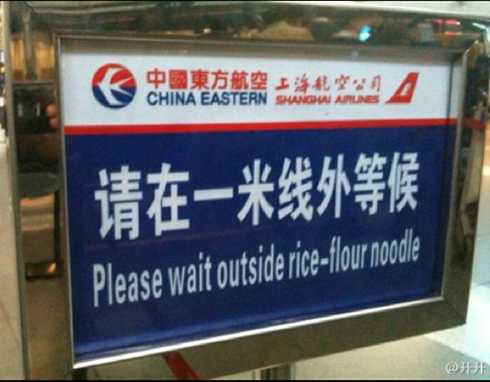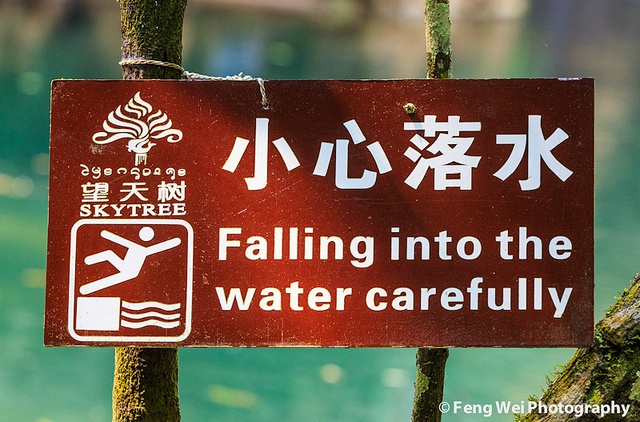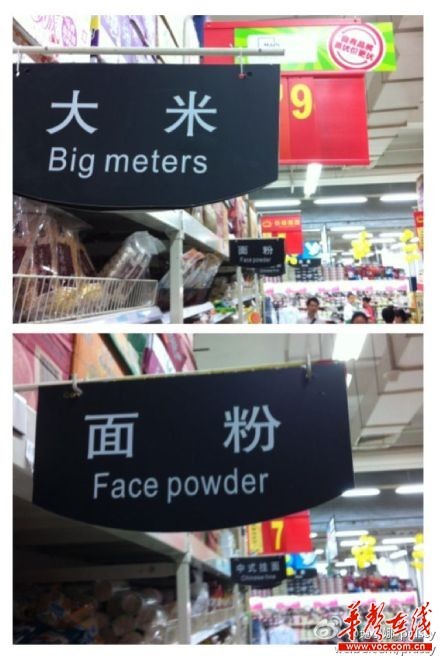
Language translations can be funny, right?
Since the dawn of man, development of language has been the single most important to separate him from the other animal on the planet – and each other. As cultures rose, those with the ‘gift’ to learn another language became valued assets to the leadership. Yet reliance on individuals to ensure the intended message was conveyed and received was fraught with potential disaster. Even after the development of written language, those who did not know the target language were still at the mercy of their translators though they could more easily get second opinions.
In today’s world, the use of computer-aided translation has brought this ability to the masses. Translation databases and algorithms for many of the alphabetic languages have reached a level where basic translation can be nearly automated. Still, some nuances of the translation still require human intervention to ensure the best translation is used. Certainly, documents of a legal, commercial or governmental ilk still require extensive proofreading by trained linguists.
For logographic languages, those languages written with symbols and not alphabets, the problem is more acute. Context, parsing of characters and specific combinations must be considered when translating from or to these languages. This leads to a large number of possible results, some of which are far from the intended message. While the following examples are of a humorous nature intentionally, one can easily imagine the negative impact of making such mistakes in a foreign court-room, with a patient’s medical record or a large commercial contract.
Waiting with Noodles

Source link: http://languagelog.ldc.upenn.edu/nll/?p=3366
This is what the Chinese sign really says:
Qǐng zài yī mǐ xiàn wài děnghòu
请在一米线外等候
“Please wait behind the one-meter line”
How was such a blatant mistake made? Is this machine translation at work or someone with a Chinese-English dictionary translating word-for-word?
• Google Translate – “Waiting outside in a noodle” – that’s close
• Babylon – “The m-line waiting outside” – not any closer
• Babel Fish – “Please wait outside rice-flour noodle.” The perfect match.
The cause of this mistake is failing to choose the correct parsing of the characters in the sentence – a common mistake when translating especially logographic languages.
The phase yī mǐ xiàn 米线 is the culprit. Two options exist
1. [yī [mǐ xiàn]] “one rice-noodle”, and
2. [yī mǐ] xiàn]] “one-meter line”.
In this context, mǐ 米 is an abbreviated transcriptional loan for English “meter”, rather than a morpheme meaning “rice”. Both Google and Babel Fish selected the incorrect parsing and produced a meaningless phrase. Could a different translation algorithm properly parse this sentence? Yes! Baidu Fanyi, the Chinese equivalent to Google Translate, produces the correct translation: “Please wait behind the 1-meter line.”
This demonstrates two important elements of machine translation – context and previous experience (past translations). Both pairs of characters likely exist in all the translations engines’ databases. Making the right selection comes down to associating the correct pair with the given application (context). This becomes a very complex problem with many possible combinations. However, it is clear that when airport crowd control is the context, it is highly unlikely ‘one rice-noodle’ will be a commonly used phrase when creating signs.
You could pay a professional language translation company to translate your signs and rest assured people wouldn’t laugh at them. Perhaps more importantly, it preserves the perception of professionalism that would be badly damaged by such an obvious translation mistake.
Some other humorous examples follow. While funny on the surface, they all show the potential negative impact poor translations can have on the enterprise. Until such time as computer-aided translations can accurately and consistently deal with the context of translations, care must be taken to ensure one intended meaning is delivered.
Falling into the water carefully

Source of the image: https://www.pinterest.com/pin/533535887074718722/
The Chinese “小心落水” means “be careful, don’t fall into the water”
Errors in the Grocery Store
In Chinese, “大米” is “rice” (top example) and “面粉” is “Flour” (bottom example). However, the translator separates the two Chinese characters into two different words. “大” in Chinese means “big”, and the “米” in Chinese means “meter”. The same issue exist with the translation of “面粉”.
Get me out of here!
The Chinese “出口” has two different meanings. One is Export, another is Exit. In the following case, the sign shows the location of the exit of the museum, so it should be translate as “Exit”.
Examples of errant translations are not limited to logographic languages. Here is a link to a humorous slide show with examples of translation errors between Spanish and English, two languages very often translated in both Europe and the Americas. You’d think by now, they could get in right!
http://www.huffingtonpost.com/2013/02/27/10-funny-translations-spanish-english_n_2774588.html
As the Internet shrinks the gap between cultures, more care than ever must be made to ensure that the intended meaning in the source language is accurately communicated in the target language. Computer-aided translations are improving but still require input and oversight by trained human linguists. Leading language service companies are at the forefront of integrating state-of-the-art language memory with highly trained and industry-experienced linguists to help their customers avoid these embarrassing and potentially costly errors, while reducing translation time and cost.


